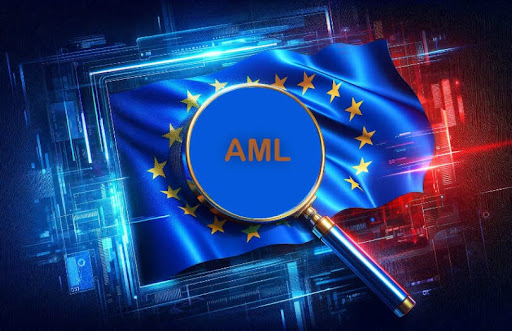The Impact of the EU AML Directives on Cryptocurrency Regulations

Over the years, the EU has put in place some directives to prevent money laundering. These are all known as the EU AML Directives. EU directives for AML bring into their ambit cryptocurrencies like Bitcoin. As the scale of the use of digital currencies grows, the risk of these becoming opportunities to launder illicit money grows, too. The European Union is updating the existing rules for fighting money laundering, which will regulate virtual assets more than ever.
Under the EU’s AML framework, financial institutions include not only banks and payment services but also crypto exchanges. They must respect norms for knowing their customer, transaction monitoring, and reporting of suspicious activity. The 5AMLD has only these obligations to include cryptocurrency businesses. Sellers of virtual currencies must follow customer due diligence and record-keeping norms that are similar to the ones applied by mainstream financial players. The new rules have been designed so that the economic system will be made more transparent, and the risks in the cryptocurrency sector will be lowered.
Cryptocurrencies and the Growing Risk of Money Laundering
As the use of cryptocurrencies has been on the rise in recent times, so has the rate of criminal activities in the virtual currency space. For instance, in 2021, some $2.8 billion in cryptocurrency transactions was associated with activities like drug trafficking. Faced with the growing threat, the EU reacted to the danger by adopting anti-financial crime regulations for virtual assets under the EU AML Directives.
How the 4th AML Directive Addressed Virtual Currencies
In 2015, the Fourth EU Anti-Money Laundering Directive, or 4AMLD, was passed — the first time the EU had regulated cryptocurrency in its AML compliance framework. It required virtual currency exchanges and wallet providers to identify. Their customers for any transactions of more than 1,000 euros a month. Many found the rules vague, and one report estimated that the directive covered 30% of the European crypto space.
The 5th AML Directive’s Expanded Regulations
The Fifth AML Directive was legislated in 2018 and raised the EU AML regulation to a considerable measure. These obligations under the Fifth AML Directive are extended to all platforms involved. In the crypto-fiat exchange and providers of custodial wallets, irrespective of the volume of transactions. It extends the period for record-keeping to 10 years to increase the traceability of crypto transactions. These are the measures meant to protect the very high standards of AML directives within the EU from abuse in the world of digital currencies.
Requirements for Crypto Exchanges and Wallet Providers
The 5AMLD placed a lot of obligations on crypto businesses, now entirely under.The anti-money laundering EU AML regulations and directives. They have to establish who the customer is by collecting names, addresses, and copies of IDs. The exchanges must confirm the origin of the funds for any deal above 1,000 euros.
Due Diligence and Customer Identification Measures
Crypto firms need to collect data on the identity of clients, sources of wealth.The approximate volume and nature of the transaction to meet their customers’ due diligence. They should screen for politically exposed people and do a risk assessment in the adoption of new technologies. Over 25 percent of the most high-risk use of cryptocurrencies was related to cybercrime, as found by Chainalysis. Conducting KYC will also avoid such illegal outflows in EU Directives in AML Compliance anti-money laundering laws.
Monitoring Transactions and Reporting Suspicious Activity
All crypto-related businesses have reporting obligations under the EU AMLD. They are required to monitor customer activities and transactions for any suspicious patterns. In any unusual transaction for over 1,000 euros, a report is supposed.To be filed with local financial intelligence units without delay. In France, the reports about operations suspected to have been operating with virtual assets have risen tenfold compared to 2020.
Implications and Challenges of Compliance for Crypto Businesses
- Hiring compliance teams and technology and monitoring solutions is expensive for many small crypto exchanges and wallet providers.
- Strict KYC rules push privacy-focused customers away, as they want to keep their identity private.
- The tools that would monitor thousands of transactions on a daily basis, looking for suspicious patterns, are still in development.
- Understanding of some requirements is very uncertain and vague, which can lead to inadvertent non-compliance.
- Time-consuming verification processes can impact the user experience and new user acquisition.
- Cross-border operations face divergent rules because different EU countries implement directives in different ways.
Industry efforts to ensure best practice
EU’s anti-money laundering framework is working against money laundering. It has worked to extend the scope of the region’s anti-financial crime regulations to virtual assets and service providers. The directives aim to maintain high EU standards of compliance and transparency. The implementation of new rules poses a significant challenge to crypto businesses. With the ever-increasing popularity of digital currencies, adherence to best practices for anti-money laundering. Would go a long way toward ensuring credibility for the emerging crypto industry. A balanced approach can help achieve the EU’s objectives of deterring illicit flows while also encouraging legitimate financial innovation.









